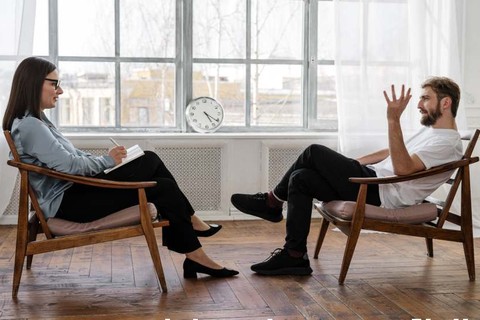There are many ways that organizations structure interviews. It is good to know about the different types of interviews to be best prepared for meeting with prospective organizations, graduate and professional schools, and service programs. You may experience multiple rounds of interviews with different or similar structures for the same position.
Phone Interviews
Oftentimes, interviews – especially first-time interviews – will take place over the phone as they can save time for both the interviewer and you. However, phone interviews do come with their own set of unique challenges. For example, you won’t be able to see the other person’s reactions and therefore must pay close attention to how you are coming across in the interview.
It is important to act your most professional during a telephone interview. Be mindful of your voice and word choice. Avoid the use of vocal crutches such as “Umm…” when you speak and be sure that your tone and inflection convey confidence and energy. Talk into the receiver and try to call from a small space with limited background noise.
In addition, phone interviews provide an opportunity for you to take and use notes. Before the interview make a list of topics you want to cover and any questions you might have for the interviewer. Be careful as to not create long lapses in the conversation with your note taking, and remember that it is okay to tell your interviewer that you are taking notes. Your interviewer is likely to also be taking notes. This is important to note especially when there are lapses in the conversation.
One-on-One Interview
There are many interviews where the structure will be you and one interviewer. A one-on-one interview is a great opportunity to build a friendly relationship and positive connection. It is unlikely that this will be the only type of interview you have. So do expect that you will have additional interviews in different formats.
Panel Interviews
More common than a one-on-one interview are panel interviews. Panel interviews could involve multiple members of the team or organization. The setting may be the group sitting around a table or you in front of a room with a group or the interviewers in a row facing you.
The question format could be either casual or very structured. The questions may come from multiple people or just one person. It is important to keep in mind that you need to look at and address each person in the room, not just the person asking the question.
Group Interviews
Organizations can structure group interviews in various ways. But the common theme in all group interviews is that there are multiple interviewees being interviewed at the same time, possibly in the same space. It is important that no matter what type of group interview you have to show respect to the other interviewees.
One type of group interview is where you are given a situation or case to solve with the other interviewees. The interviewers are observing and recording their impressions of your engagement, communication, teamwork, and problem solving abilities.
A second type of group interview is when multiple interviewees arrive at the same time, and proceed to individual or panel interviews. Interviewees would then be rotated between additional interview rooms.
The third type of group interview is structured where all interviewees and all interviewers are in one room. Interviewers ask questions that each interviewee is then asked to answer. Interviewees hear all other responses and must then work to differentiate their answers from the others in the room.
Job Fairs
The first type of interview that you may have at a job fair is a mini interview at the employer booth. When approaching the booth be prepared to introduce yourself and give a brief elevator speech. Be prepared to ask questions about opportunities and the company demonstrating that you have done research on the organization (see below Researching for the Interview). Have résumés available, but some may not accept paper copies and may ask that you submit through an online system. Recruiters talk to many candidates at the fair, so the conversation will be brief.
Some job fairs offer organizations separate space to conduct interviews. If you are offered an on-site interview, keep the recommendations in the above sections in mind as you prepare to attend the job fair. The space may offer less privacy than you may find in other types of interviews and these are typically screening interviews.

